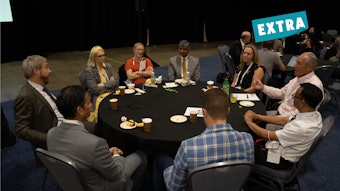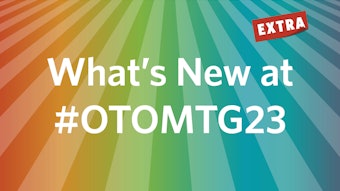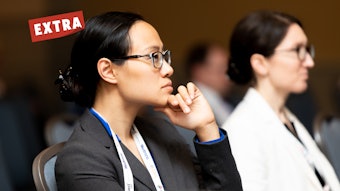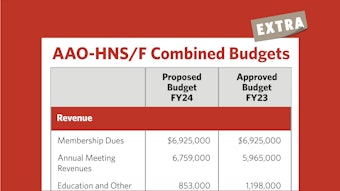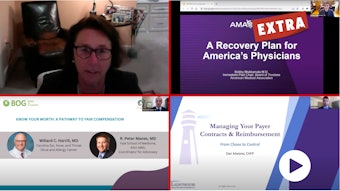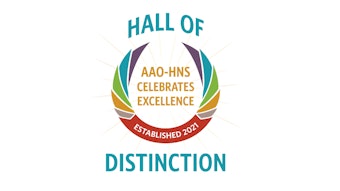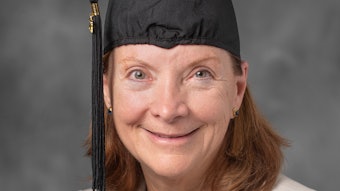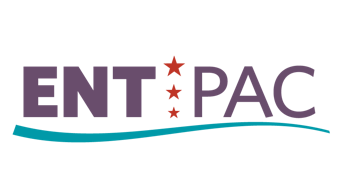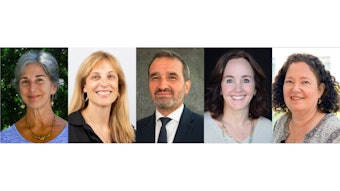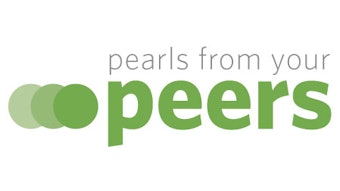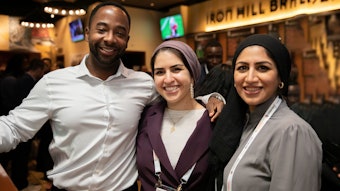The Joy Is Still There
We must do a better job of acknowledging the joy of medicine while muting the unnecessary noise that is obscuring it.
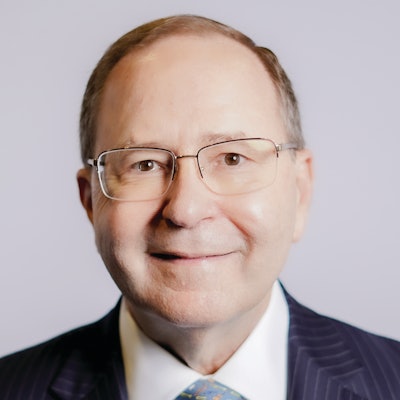 James C. Denneny III, MD
James C. Denneny III, MD
AAO-HNS/F Executive Vice President and CEO
Lo and behold, I had the good fortune to participate in several events recently that provided me a different insight than the daily news and the seemingly never-ending string of assaults on the efficient practice of medicine. I attended the first three AAO-HNSF Global Grand Rounds (GGR) Webinars of 2023, the first being the February presentation, “Endoscopic Sinus Surgery: Technique and Strategy to Optimize Patient Care,” which was cosponsored by the Pan-American Association of Oto-Rhinolaryngology-Head and Surgery. There were 2,427 registrants from over 106 countries, the largest attendance in the program’s three-year history. The March webinar, “New Frontiers in Pediatric Airway,” was cosponsored by the Young Physicians Section and the Section for Residents and Fellows-in-Training as part of the International Young Physicians Forum. There were 1,454 registrants from 118 countries for this event. Most recently, the May webinar, “Cutting Edge Therapies and Advances in Laryngology,” was cosponsored by the Brazilian Association of Otorhinolaryngology with 1,313 registrants from 121 countries.
The GGR Webinar Series was instituted by the AAO-HNSF International Advisory Board in 2021 and has proven to be one of the most successful and outstanding education outreach programs of the last several decades. The original goal was to create a platform that would offer the global otolaryngology community an opportunity to come together and learn from each other in a collaborative venture during the COVID-19 pandemic when in-person education opportunities were severely limited. The exceptional quality of the programming presented on these webinars has created a growing audience even as the pandemic has receded. This year alone the first three events had close to 5,000 registrants representing over 125 countries. This offering is a prime example of how global collaboration benefits our specialty in many ways and satisfies the universal thirst for knowledge that most medical professionals have.
Two other events were also critical to my observations from different settings. I attended the 72nd National Congress of the Society of Otorhinolaryngology of Mexico in April at which we were joint sponsors of the meeting. There was a large contingency of faculty from the United States at this meeting in addition to the superb Mexican faculty that drew over 1,400 attendees. Finally, after returning from the meeting in Mexico, I participated in the AAO-HNSF Education Steering Committee (ESC) spring meeting via Zoom. This meeting, which included the AAO-HNSF Education Coordinators, committee chairs, and staff, provided a review of the current status as well as served as a planning meeting for upcoming projects and a think tank for future enhancements and improvements for our education curriculum.
You might be wondering what observation ties these five events together. It was the common thread that brought gratitude to witness firsthand the enthusiasm and joy individuals from our global otolaryngology community displayed in varying settings centering around knowledge sharing and knowledge gathering. This is especially poignant at a time when burnout in otolaryngology has reached 67%, where 31% of otolaryngologists who completed our workforce survey indicated they would retire tomorrow if they could, and 43% of physicians said that they would not go into medicine again according to the recent Becker’s report.1
The last several in-person meetings, including the AAO-HNSF 2022 Annual Meeting & OTO Experience in Philadelphia, Pennsylvania, were noteworthy for a smiles-all-around atmosphere present throughout the meeting. Some were happy just to be there and see colleagues, but there was a definite additional thread related to providing and receiving new educational knowledge. The speakers clearly enjoyed and took pride in presenting the latest information that down the road would help patients in attendees’ communities wherever they practice. They smiled when answering questions after the presentation and welcomed further conversation outside the room. The learners could not seem to get enough information and were eager to discuss topics with their fellow attendees as well as the faculty. The social events incorporated into the meetings were expectedly an extension of the general tenor of the meetings, expanding upon the joy of learning.
Although it may be a surprise to some, the experience at the virtual meetings was much the same without the social events. The presentations from faculty speaking many languages were meticulously prepared and presented in a way that facilitated learning and encouraged interaction. Most went out of their way to make sure the audience understood the key points of the presentation, and the comments in the chat as well as Q&A sections were proffered with gratitude. There was clearly excitement on both sides of the equation. The last experience with the ESC came from a slightly different angle. After hearing about a new project that would require considerable work from the group, the response was “bring it on.” There was a clear demonstration of confidence from both the group and individual levels that exuded a sense of excitement, pride, joy, and satisfaction from knowing that they could do the job and produce a superior product to anyone else’s.
It buoyed my spirits significantly to know that despite all the noise going on around patient care, otolaryngologists get immense joy from accumulating knowledge and transferring it to others so that the health of patients around the world is better. We must do a better job of acknowledging the joy of medicine while muting the unnecessary noise that is obscuring it. I look forward to being a firsthand witness to this joy at the AAO-HNSF 2023 Annual Meeting & OTO Experience in Nashville, Tennessee, September 30 – October 4. See you there!
References
- Shanafelt, TD, Changes in burnout and satisfaction with work-life integration in physicians during the first two years of the COVID-19 pandemic. Mayo Clinic Proceedings. 2022 December;97(12). https://doi.org/10.1016/j.mayocp.2022.09.002


